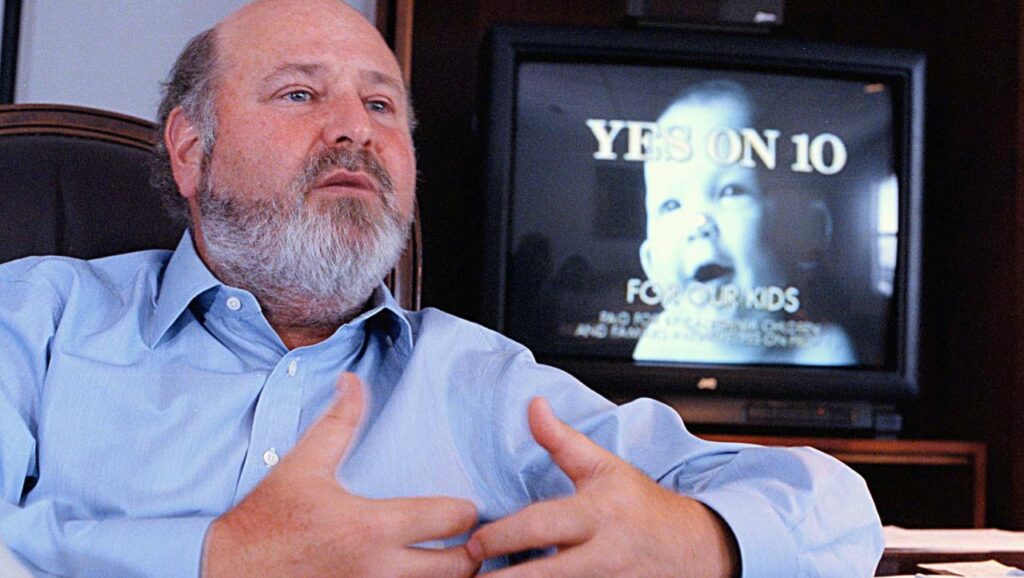Soaring utility bills in California are causing financial strain for residents and businesses, with no immediate relief in sight. (GV Wire Composite/Paul Marshall)

- Over 1 million PG&E customers are behind on their utility payments.
- The California Public Utilities Commission approved another rate hike last month.
- Assemblyman James Gallagher introduced legislation to cut electricity rates by 30%.
Share
|
Getting your Trinity Audio player ready...
|
Unaffordable housing, high transportation and health care costs – it’s hard enough to get by in California without also worrying about cranking up the air, turning on the stove or simply keeping the lights on.

Julie Lynem
Special to CalMatters
Opinion
But that’s what concerns many Pacific Gas & Electric Co. customers who cannot afford to pay their soaring utility bills. As of February, more than 1 million of them were behind on payments.
The California Public Utilities Commission, tasked with regulating private utilities, just approved another rate hike last month, on top of a previous increase that took effect in January, amounting to a roughly $400 annual bump for the average household. The staggering energy costs have rocked residents and business owners, who are exasperated by the inability of state leaders and commissioners to ease their financial pain.
With rates becoming increasingly unsustainable, the long-term repercussions for those already living paycheck to paycheck seem dire. More broadly, could these elevated costs serve as an impediment to wider adoption of all-electric vehicles and appliances? Will PG&E or the CPUC commissioners who approve these outrageous increases face any consequences?
Customers Pay for PG&E Negligence
The utility’s negligence and aging infrastructure has led to loss of life, property and – in the case of Paradise – an entire California town. Nevertheless, consumers are paying the price for the consequences of their mistakes and the cost of preventing future ones.
“They’re outraged and they’re frustrated,” Assemblyman James Gallagher, a Chico Republican and Minority Leader, said of his constituents. Over the years, Gallagher has authored multiple laws to compensate wildfire survivors and help communities recover.
“The cost of living is already so high, and to add another rate increase, people are very angry about it,” he continued. “They don’t understand it. Why is it that rates keep going up, when you have a company that made (more than) $2 billion in profit last year?”
Related Story: It’s the Only Store for Dozens of Miles. PG&E’s Latest Rate Hikes ...
So far, answers to such pressing questions remain elusive, and potential solutions far from assured.
In February, Gallagher, along with Republican Assemblymember Joe Patterson, introduced legislation that would order the CPUC to cut electricity rates by 30%. If Assembly Bill 2205 is pushed through, Gallagher hopes it will ease the burden on families and businesses.
“We’re putting the PUC in a position where they’re proactively looking out for consumers and not looking out for utility companies,” he said.
In response to public outcry, the state’s utility regulators proposed a new, tiered billing structure designed to make the price of electricity less expensive for residential customers. Under the proposal, customers of PG&E, Southern California Edison and San Diego Gas & Electric would pay an income-based rate, helping reduce bills for lower-income customers.
According to the CPUC, the billing structure would include a flat rate of $24.15 per month for most households, which would reduce the price of electricity by 5-7 cents per kilowatt hour. If approved, it would go into effect late 2025 and early 2026.
This proposal, however, has already sparked fierce debate, and comes on the heels of a prior recommendation for a fixed rate. That proposal also received pushback from lawmakers who argued that the pricing structure might do more harm than good for low-income households.
A Call to Cap Surcharges at $10 or $5 Monthly
Some legislators, including Jacqui Irwin, a Thousand Oaks Democrat who recently called the CPUC “completely out of touch,” want to repeal the proposal establishing an income-graduated fee and replace it with Assembly Bill 1999, capping the fixed charge at $10 ($5 for low-income customers).
Legislative maneuvering aside, affordable energy and climate advocates like Mark Toney, executive director of The Utility Reform Network, believe that placing a cap on utility rate hikes is just one part of the solution. Regulators should also require utilities to exercise fiscal discipline on spending, he said. Utilities, Toney explained, should not be given a “credit card with no limit and a guarantee that someone else is going to pay.”
Related Story: Skyrocketing PG&E Rates Put the Squeeze on EV Owners
TURN is backing the Utility Accountability Act, a sensible bill that would prohibit utilities from using funds collected from ratepayers to pay for advertisements, political activities or membership dues of trade associations engaged in lobbying. It would also require utilities to document and disclose their spending.
Another sticking point is charging utility customers for climate initiatives that reduce wildfire risk or expand clean energy. With its ambitious climate goals, California can ill afford to discourage people from helping reduce the impacts of a warming planet.
By increasing the cost for using electricity, “that’s not rewarding people for good behavior,” Toney said.
Gallagher contends that climate mandates can be costly requirements passed onto consumers, and routinely hears from constituents exhausted by the rate spikes and sometimes one paycheck from losing everything. PG&E failed to modernize and keep up with vegetation management, but now wants to place more underground utility wires and send consumers the bill.
When Will a Remedy to Soaring Prices Arrive?
Undergrounding, he added, doesn’t have to be done everywhere just yet.
“There needs to be a greater focus on modernizing this infrastructure, but how do we go about that without putting all the burden on consumers?” Gallagher said. “A shareholder fund could be part of that, or maybe some state interest in modernizing the grid. All these things should be brought to the table.”
For Ahmad Faruqui, an energy economist based in Danville, a remedy cannot come soon enough. The No. 1 concern of friends and neighbors remains the exorbitant cost of electricity, which has been rising faster than the rate of inflation. People are just “doing their best to pay the mortgage, car payments and their children’s education,” he said.
At some point, though, customers will grow too weary of the financial strain. Faruqui predicts there could be a “huge backlash” for the governor and legislators if it’s not brought under control.
“We are paying for their blunders,” Faruqui said of PG&E.
Californians deserve better than what they’re getting from the state’s largest and most expensive utility company – and the commission charged with regulating it. With no relief in immediate sight, more people will be faced with impossible choices, contemplating which necessities should be sacrificed just to light up their homes at night.
Those are choices no utility customer should ever have to make.
Related Story: Solar Customers Could Be ‘Orphaned’ by PUC-Triggered 22% Industry ...
About the Author
Julie Lynem is a journalism lecturer at Cal Poly San Luis Obispo and co-founder of R.A.C.E. Matters SLO County and RaiseUp SLO. Lynem is a veteran journalist who has been a reporter, columnist or editor at the Indianapolis Star, San Francisco Chronicle and San Luis Obispo Tribune.
Make Your Voice Heard
GV Wire encourages vigorous debate from people and organizations on local, state, and national issues. Submit your op-ed to bmcewen@gvwire.com for consideration.
About CalMatters
CalMatters is a nonprofit, nonpartisan newsroom committed to explaining California policy and politics.


















